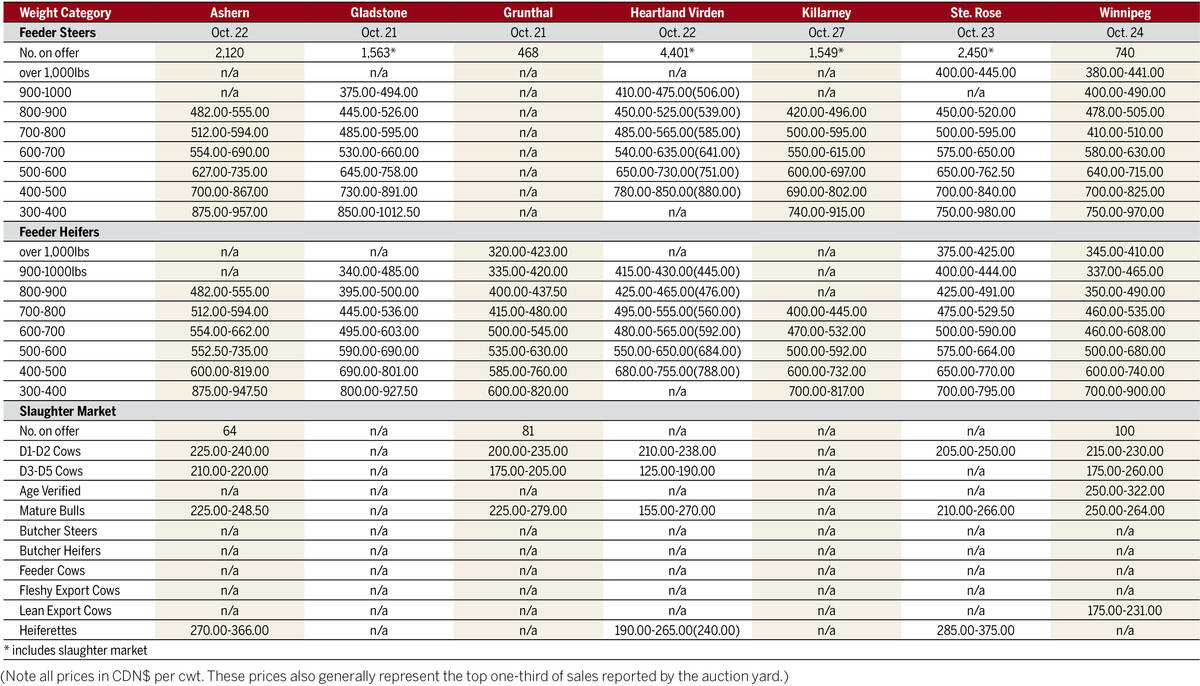As the calendar flipped to December, the fortunes of Chicago soyoil, along with soybeans and canola, turned cold.
On Dec. 1, the Environmental Protection Agency announced plans for a new biofuel blending mandate under the United States’ federal Renewable Fuel Standard. Starting in 2023, a greater volume of biofuels will be mixed with fuels at U.S. oil refineries in an effort to reduce climate change.
The amount will increase year by year, with the 2023 volume set at 20.82 billion gallons, of which 5.82 billion would come from advanced biofuels mostly made from soyoil. However, considering that next year’s volume is only a 0.9 per cent increase from 2022, the increase of soyoil in the proposed blend is minimal.
Read Also

Manitoba cattle prices – Oct. 28
Local cattle sale prices from Manitoba’s seven cattle auctions for the week of Oct. 14 to 21, 2025.
“This draft rule slams the brakes on progress being made in biofuels investment and growth,” American Soybean Association president Brad Doyle said in a statement.
[RELATED] Bunge expects U.S. renewable diesel capacity of about five billion gallons by 2024
“Instead of continuing to support available, low-emission plant-based fuel sources, EPA has changed course and seemingly is ignoring the major investments in and consumer demand for biomass-based diesel and other biofuels that exists right now.”
Soyoil sunk by its daily limit of 4.5 U.S. cents per pound by 10:20 a.m. on Dec. 1, its largest decline since June 17, 2021, and pulled soybeans and canola down with it. The January soybean contract closed 39.75 U.S. cents lower per bushel, its largest drop since Sept. 30, at US$14.2975. The January canola contract fell by $30.70 per tonne, a drop unseen since Aug. 2, to $814.80.
Amid speculation about the new biofuel mandate, Dec. 1 was the third-straight session in which soyoil had declined. Rallies of three and five straight sessions ended for canola and soybeans, respectively.
Canola was well supported by strong crush margins exceeding $300 above the futures, and still was at $264 above the futures on Dec. 1, according to ICE. Funds putting money back into long positions to end November also didn’t hurt, allowing canola to trade between $803.50 and $849/tonne between Nov. 28 and 30.
[RELATED] ICE weekly outlook: Less canola to be exported
Statistics Canada released its principal field crop report on Dec. 2, which showed canola production at 18.17 million tonnes, one million fewer than its September estimate and the trade’s pre-report estimate. The latest production numbers may give canola a boost in the markets, but further declines in soyoil and resulting weakness in crush margins could also create more volatility.
The U.S. House of Representatives and the U.S. Senate both voted to avert a nationwide rail strike on Nov. 30 and Dec. 1, respectively. However, soybeans are still facing uncertainty.
Will COVID-19 restrictions ease in China, creating more demand? Will dry weather conditions affecting Argentina’s crop spread to Brazil? Will the Argentine government’s new soy exchange rate implemented on Nov. 29 stimulate export markets?
All in all, we could be looking at a wild winter for oilseeds.
















